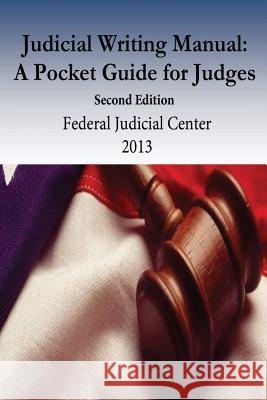Judicial Writing Manual: A Pocket Guide for Judges » książka
Judicial Writing Manual: A Pocket Guide for Judges
ISBN-13: 9781539435617 / Angielski / Miękka / 2016 / 56 str.
This manual is not intended to proclaim the right way of writing an opinion. Anyone who attempts to announce authoritative rules of good writing invites debate and comparison. As one judge said, "I have one overarching rule. That is, don't have any such rules." Indeed, in a leading text on good writing, E. B. White acknowledged that " s]tyle rules of this sort are, of course, somewhat a matter of individual preference, and even the established rules of grammar are open to challenge." Instead, the purpose of the manual is to stimulate judges to think as systematically about writing their opinions as they do about deciding their cases. Judges should ask themselves: Am I writing this way because this is how I've always done it, or is there a better way? Is there a reason for organizing the opinion this way? For including these particular facts? For discussing this issue at length? For citing this case? Is this sentence clear? Are all the words in it necessary? In the following parts, the manual takes readers through the opinion-writing process. Part 2 suggests issues to consider in deciding whether to write a formal opinion, a memorandum, or an unpublished opinion. Part 3 discusses steps a judge should take before starting to write. Part 4 discusses the organization and content of an opinion. Part 5 offers suggestions on language, style, and editing. Part 6 presents considerations for cowriting an opinion, commenting on the opinions of other members of the court, and writing dissenting and concurring opinions. Part 7 contains a list of books and articles that may be useful to those who want to read more about judicial writing. The appendices provide examples of some of the writings discussed in the manual, such as summary orders and dissenting opinions.
Zawartość książki może nie spełniać oczekiwań – reklamacje nie obejmują treści, która mogła nie być redakcyjnie ani merytorycznie opracowana.











